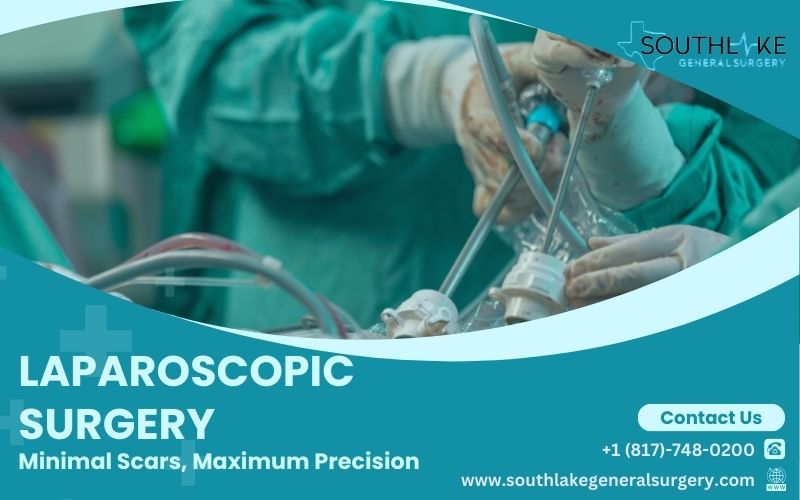What Is Laparoscopic Surgery?
Laparoscopic surgery, also known as minimally invasive surgery, is a modern surgical technique that allows surgeons to perform procedures with smaller incisions compared to traditional open surgery.
It involves using a laparoscope, a long, thin tube with a light and camera attached to it, which is inserted through a small incision in the abdomen. This camera provides a high-resolution video feed that allows the surgeon to visualize the surgical site in real-time on a monitor.
Key Highlights
- Laparoscopic surgery is a minimally invasive procedure that uses a thin, flexible tube with a light and camera attached to it.
- This allows the surgeon to view the inside of the abdomen or pelvis on a monitor.
- It is commonly used for diagnostic purposes and to perform various surgical procedures.
- Some advantages of laparoscopic surgery include less pain, a shorter recovery time, and a decreased risk of infection.
What is a laparoscopy?
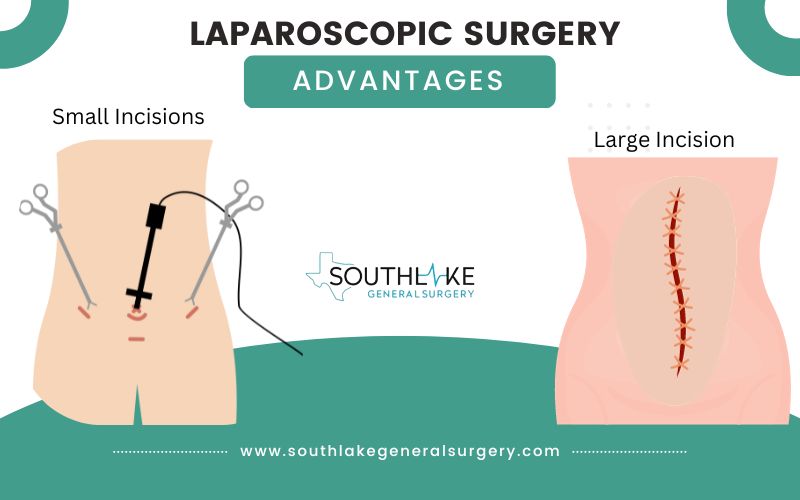
A laparoscopy, also known as laparoscopic surgery or diagnostic laparoscopy, is a minimally invasive surgery that involves the use of surgical instruments and a laparoscope. A laparoscope is a flexible, thin tube with a light and a camera attached, allowing the surgeon to view the inside of the abdomen or pelvis on a computer screen or a video monitor with the help of specialized surgical instruments.
Laparoscopy is a type of surgery that is commonly used for diagnostic purposes as well as for performing various surgical procedures. Laparoscopic surgery is a minimally invasive surgical technique, also known as keyhole surgery, that uses small incisions and a camera to operate inside the abdomen or pelvis.
It offers several advantages over traditional surgery methods. Some of these advantages include reduced pain, less scarring of tissue, a shorter recovery time, improved patient outcomes, and a decreased risk of infection.
Can laparoscopic surgery be used for any kind of operation?
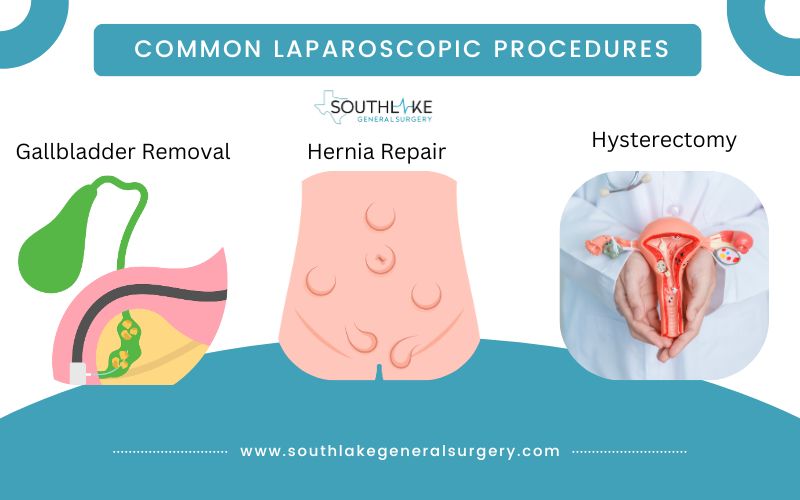
Laparoscopic surgery can be used to perform a wide range of operations in the abdomen or pelvis. Some common procedures include:
- gallbladder removal
- appendectomy
- hernia repair
- hysterectomy
Laparoscopic surgery is also used for treating conditions of the reproductive organs such as endometriosis, ovarian cysts, fallopian tubes, and certain types of cancer. The versatility of laparoscopic surgery allows for precise and effective treatment of various conditions while minimizing the risks and possible complications associated with traditional surgery or open surgery.
In addition to the mentioned procedures, laparoscopic repair can also be used for:
- gastric bypass surgery
- colon resection
- liver resection
This minimally invasive surgery is becoming increasingly popular due to its shorter recovery time, minimal scarring, and reduced postoperative pain.
To perform the laparoscopy surgery, the skilled surgeon makes small incisions, each measuring approximately a half inch long, near your belly button. Enhance visualization of internal organs by introducing carbon dioxide gas into the abdominal cavity to separate the abdominal wall from your organs, thereby creating additional room and facilitating improved visibility.
The surgeon inserts a small tube called a laparoscope through a small incision near your belly button, accompanied by a compact camera and surgical tool, into the abdominal region, allowing for a meticulous examination of the intricate network of organs and glands with the help of specialized surgical instruments. This visual data is then seamlessly transmitted onto a computer screen or a video monitor, providing a comprehensive view for further analysis and evaluation.
Laparoscopic surgery offers patients a faster return to their normal activities and a reduced risk of postoperative complications, such as infection.
During both surgical procedures, the highly skilled surgeon will administer general anesthesia to ensure you will be at sleep for a few hours in the operating room and have a pain-free experience throughout the entirety of the recovery room after the operation.
Overall, this advanced laparoscopic approach has revolutionized the field of abdominal and pelvic surgery, providing patients with safer and more efficient treatment options.
Impact of Carbon dioxide gas
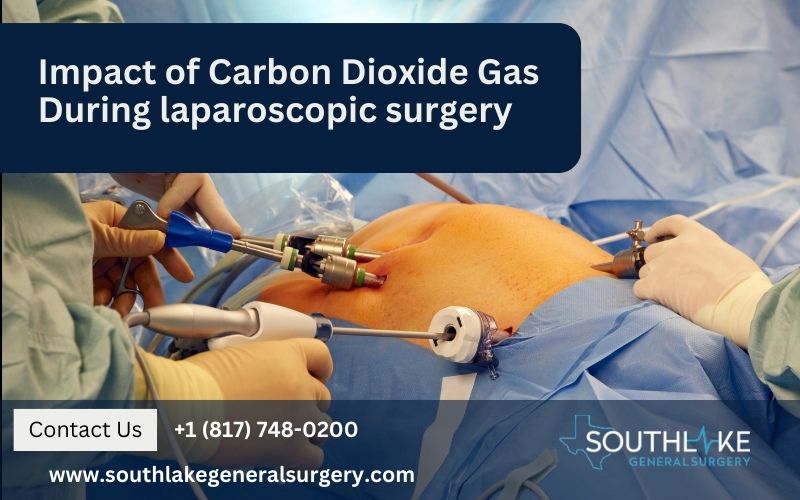
After laparoscopic surgery, it is common for patients to experience some discomfort or bloating due to the presence of carbon dioxide gas in the abdominal cavity. This gas is used during the procedure to create space and improve visibility for the surgeon.
While the body typically absorbs and eliminates the gas within a few days, some people may experience persistent discomfort or pain. If you are experiencing persistent symptoms, it is important to consult with your healthcare provider for appropriate treatment options.
Can minimally invasive surgery be used outside the abdomen and pelvis?
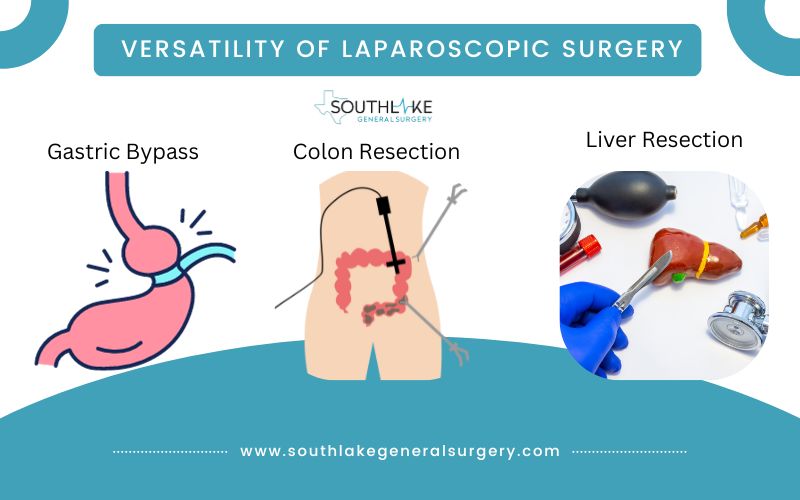
The application of laparoscopic surgery is not limited to the abdomen and pelvis. In recent years, the technique has been successfully adapted for the treatment of other body areas laparoscopically, including the chest cavity, joints, and even the brain.
This expansion of keyhole surgery into new domains has opened up exciting possibilities for minimally invasive treatment options in various medical specialties.
However, it is important to note that the feasibility and safety of laparoscopic surgery in these areas may vary and require specialized training and expertise.
For example, in thoracic surgery, laparoscopic techniques can be used to perform minimally invasive lung resections and mediastinal tumor excisions. In orthopedics, laparoscopic surgery has been employed for joint repairs and replacements, reducing post-operative pain and recovery time.
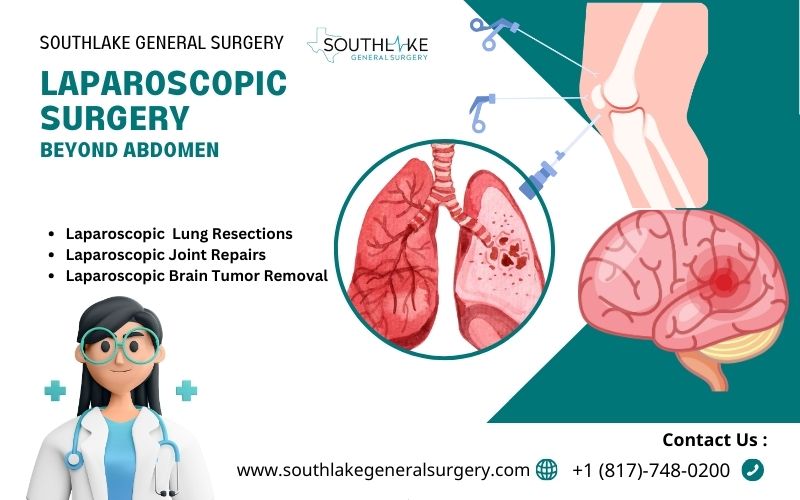
Additionally, neurosurgeons have explored the use of laparoscopic techniques for brain tumor removal and the treatment of certain neurological conditions. As with any surgical procedure, careful consideration must be given to patient selection and appropriate training to ensure optimal outcomes and patient safety.
Why do I need a laparoscopy?
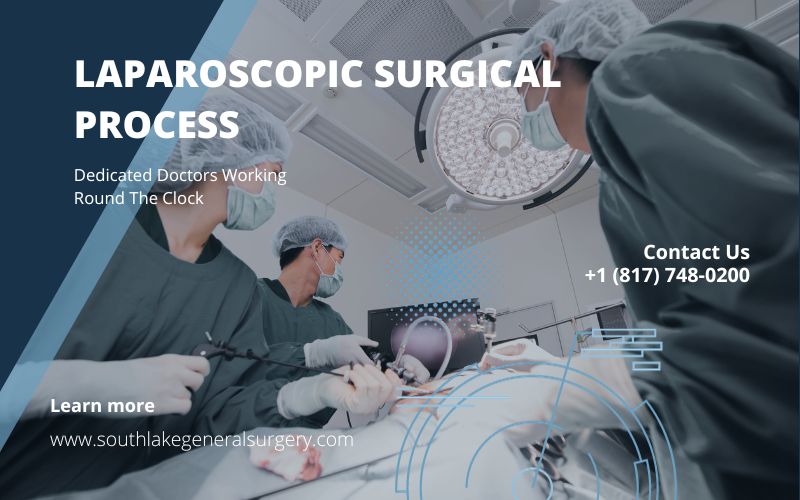
Diagnostic laparoscopy may be recommended for a variety of reasons, depending on your specific medical condition. It can be used as a diagnostic tool to investigate and identify the cause of certain symptoms or abnormalities.
For example, if you are experiencing unexplained abdominal pain, a laparoscopy can help your doctor visualize using specialized surgical tools and evaluate the organs in your abdomen for any signs of inflammation, infection, or other abnormal growths.
Additionally, a laparoscopy can be used for therapeutic purposes, such as:
- removing small tumors or cysts
- repairing damaged organs or tissues
- performing certain types of surgeries
The minimally invasive nature of laparoscopy allows for shorter recovery times, smaller incision sites, smaller scars thereafter, and a decreased risk of complications compared to traditional surgery with a larger single incision.
Furthermore, laparoscopy offers the advantage of smaller incisions, resulting in less scarring and reduced post-operative pain for patients. This procedure also allows for a faster return to normal activities and a shorter hospital stay.
Additionally, the enhanced visualization that laparoscopy offers enables surgeons to carry out more precise and accurate procedures, improving patient outcomes.
Overall, laparoscopy offers a safer and more efficient alternative to traditional open surgery for many medical conditions.
How common is Laparoscopic Surgery or Keyhole Surgery?
Laparoscopic surgery or minimally invasive surgery has become increasingly common in recent years, with its popularity growing across various medical specialties.
It is now a widely accepted and frequently performed procedure for a range of conditions, including gallbladder removal, intestinal surgery, robotic surgery, hernia repair, laparoscopic exploratory surgery, gynecologic surgery, and appendectomy.
Many hospitals and surgical centers have dedicated laparoscopic teams and specialized equipment to accommodate the high demand for this minimally invasive surgery technique. As the benefits and advantages of laparoscopy continue to be recognized, its prevalence is expected to further increase.
How safe is laparoscopic surgery?
Laparoscopic surgery is generally considered to be a safe procedure with a low risk of complications. Numerous studies have shown that it carries a lower risk of infection, less blood loss, less pain, less internal scarring of tissue, and faster recovery times compared to traditional open surgery.
However, as with any surgical procedure, there are still potential risks and complications that can arise. The safety of a laparoscopic operation largely depends on the skill and experience of the surgeon, the patient’s overall health, and the specific procedure being performed.
Additionally, like any medical intervention, there are certain inherent risks, such as the possibility of general anesthesia complications or unforeseen complications during the surgery. Patients need to have a thorough understanding of these risks before undergoing any surgical procedure.
Patients should consult with healthcare practitioner about any issues or queries they may have. This will help ensure that they are well-informed and can make the best decision for their individual circumstances.
Do I have to do anything specific to be ready for the test?
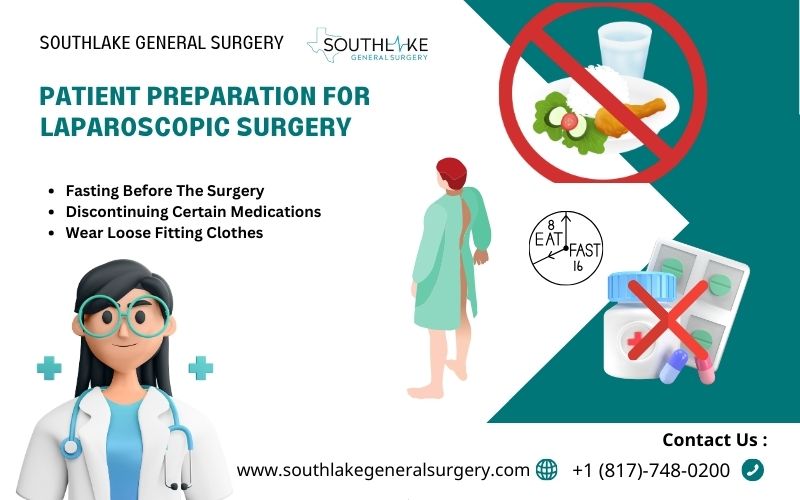
Yes, there are certain steps you may need to take to properly prepare for the surgical procedure. Your surgeon will give you specialized instructions that are appropriate for your situation.
These instructions may include guidelines on:
- fasting before the surgery
- discontinuing certain medications
- make arrangements for someone to give you a ride home afterward
- wear loose fitting clothes
It is crucial to follow these instructions closely to minimize any potential risks and ensure the procedure goes smoothly. Your surgeon will also be able to address any additional concerns or questions you may have about the preparation process.
What do the results mean?

The results of a surgical procedure can vary depending on the specific procedure and individual circumstances. In some cases, the results may be immediate and easily noticeable, while in others, it may take time for the full effects to be seen.
Your surgeon will be able to explain the expected outcomes of your particular surgery and what they mean for your health and well-being. They will also discuss any potential complications or risks associated with the procedure and what steps can be taken to minimize them.
It is important to have a clear understanding of what the results mean and to discuss any concerns or questions you may have with your doctor or surgeon before making a decision.
Are there any risks to the test?
Yes, there are potential risks associated with any surgical procedure, including the one you are considering. Your surgeon will thoroughly discuss these risks with you and provide information on how they can be minimized. Some common risks include:
- infection
- bleeding
- adverse reactions to anesthesia
- possible damage to nearby organs or tissues
It is crucial to have a complete understanding of these risks and weigh them against the potential benefits of the surgery. Your doctor or surgeon will be able to address any specific concerns you may have and provide you with the necessary information to make an informed decision.
A Note From Southlake General Surgery – Dr. Valeria Simone MD
As a surgeon at Southlake General Surgery, I want to emphasize the importance of open communication between you and your healthcare provider. It is essential that you feel comfortable asking questions and expressing any concerns you may have.
We are here to support you throughout the decision-making process and provide you with the information you need to make an informed choice about your healthcare.
Our team is dedicated to ensuring your safety and well-being, and we will work closely with you to develop a personalized treatment plan that aligns with your goals and preferences.
We understand that undergoing surgery can be a significant decision, and we are committed to supporting you throughout the entire process. Please don’t hesitate to contact us if you have any questions or concerns.
Summary
It is important to remember that every surgical procedure carries some level of risk. However, your surgeon will take all necessary precautions to minimize these risks and ensure your safety.
They will discuss any potential complications or adverse reactions to anesthesia, as well as the possibility of infection or damage to surrounding tissues or organs.
It is crucial to have a thorough understanding of these risks and weigh them against the potential benefits of the surgery. Your doctor will be there to address any specific concerns you may have and provide you with the necessary information to make an informed decision.
In addition to discussing the risks, your healthcare provider will also explain the steps they will take to prevent complications, such as using sterile equipment and following strict hygiene protocols. They may also discuss the availability of alternative treatments or procedures that may carry fewer risks.
Remember, it is important to be open and honest with your surgeon about any pre-existing medical conditions or any other symptoms or medications you are taking, as this information can help them tailor your treatment plan and minimize risks.
Ultimately, the surgeon may decide to proceed with the procedure as a personal one, and your doctor will support you in making the choice that is best for your overall health and well-being.
Make an Appointment
To make an appointment for laparoscopic surgery, you can contact your doctor’s office directly or speak to the healthcare expert at +1 (817) 748-0200 or you can also make an online appointment. They will be able to provide you with information on availability and guide you through the process. It is important to schedule the appointment well in advance to ensure that you can adequately prepare and make any necessary arrangements.
During the appointment, your doctor will thoroughly assess your medical history, conduct a physical examination, and discuss the potential risks and benefits of the procedure with you. They may also address any concerns or questions you may have, allowing you to make an informed decision.
Frequently Asked Questions
The following is a list of frequent questions that may be of assistance in addressing any concerns that you might have:
1. What are the potential risks and complications associated with this medical procedure?
The potential risks and complications associated with this procedure include infection, bleeding, adverse reactions to anesthesia, and potential damage to surrounding tissues or internal organs. It is important to have a complete understanding of these risks and weigh them against the potential benefits of the surgery. Your doctor will be able to address any specific concerns you may have and provide you with the necessary information to make an informed decision.
2. How long is the recovery time and what can I expect during the healing process?
The recovery time for this procedure can vary depending on the individual and the specific surgery performed. In most cases, it could take anywhere from a few weeks to a few months to fully recover. During the healing process, you can expect some pain, swelling, and discomfort. Your doctor will provide you with detailed instructions on how to care for the surgical site, manage pain, and gradually resume normal activities. It is imperative to adhere closely to these instructions in order to facilitate optimal healing and mitigate potential complications.
3. Will I need to make any lifestyle changes or follow a specific diet after the surgery?
After the surgery, it may be necessary to make some lifestyle changes and follow a specific diet. Your doctor will provide you with guidance on any necessary dietary restrictions or modifications. It is important to follow these instructions to support your recovery and ensure the best possible outcome.
4. Are there any alternative treatment options available?
There may be alternative treatment options available, depending on your specific situation. It is important to discuss this with your doctor to determine the best course of action for you. They can provide information on any alternative treatments that may be suitable and guide you in making an informed decision.
5. How experienced is the surgical team performing this procedure?
The experience of the surgical team performing this procedure is an important consideration. It is recommended to inquire about the qualifications and expertise of the surgical team to ensure that they have the necessary skills and experience to successfully carry out the procedure. This can help to instill confidence in the medical team and increase the likelihood of a positive outcome.
6. What is the success rate of this surgery and what are the expected outcomes?
The success rate of the surgery and the expected outcomes are important factors to consider when making a decision. It is advisable to ask about the success rate of the surgery and any potential complications or risks associated with it. Understanding the expected outcomes can help in setting realistic expectations and making an informed decision about whether to proceed with the procedure.
7. Will I need any additional follow-up appointments or ongoing care after the surgery?
It is important to inquire about any additional follow-up appointments or ongoing care that may be required after the surgery. This information will help in planning for post-operative care and ensuring a smooth recovery process. Discussing this with the healthcare provider will also provide an opportunity to address any concerns or questions regarding aftercare.
Medically Reviewed By: Dr. Valeria Simone MD
Board-certified General Surgeon at Southlake General Surgery, Texas, USA.
Follow us on Facebook and YouTube.
References:
- Garry, Ray. “Laparoscopic Surgery.” Best Practice & Research in Clinical Obstetrics & Gynaecology, vol. 89–104, no. 1, 1 Feb. 2006, https://doi.org/10.1016/j.bpobgyn.2005.10.003.
- Soltesz, E. G., & Brooks, D. (2004, January 1). Laparoscopy. Elsevier eBooks. https://doi.org/10.1016/b0-12-386860-2/00427-5
- Website, N. (2023, May 30). Laparoscopy (keyhole surgery). nhs.uk. https://www.nhs.uk/conditions/laparoscopy/
- Buia A, Stockhausen F, Hanisch E. Laparoscopic surgery: A qualified systematic review. World J Methodol. 2015 Dec 26;5(4):238-54. doi: 10.5662/wjm.v5.i4.238. PMID: 26713285; PMCID: PMC4686422.

